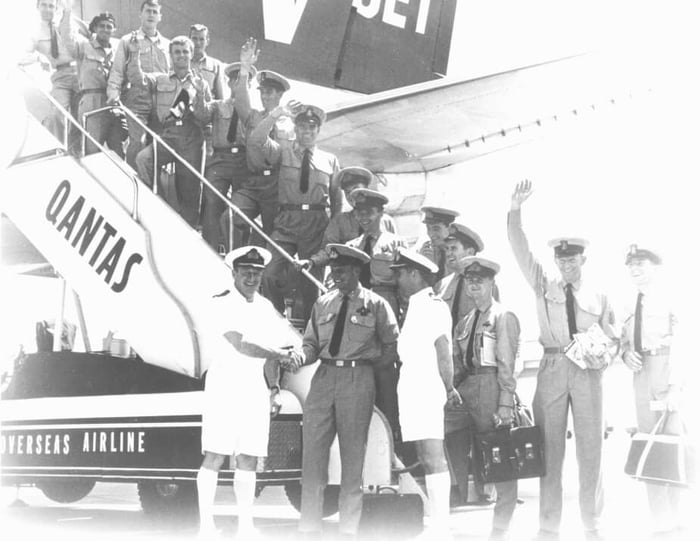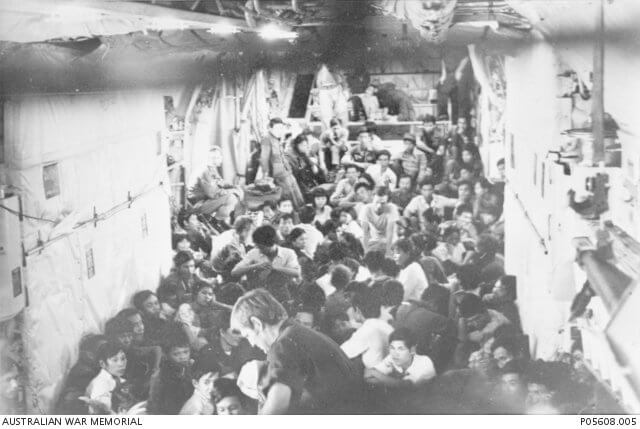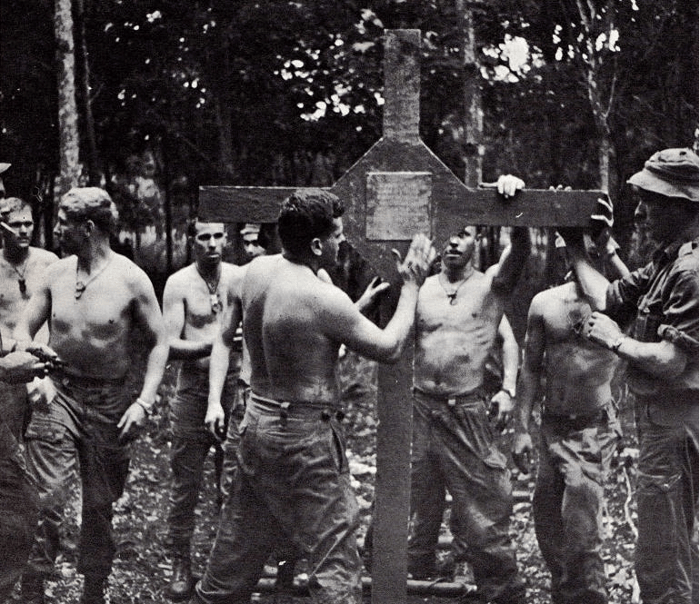
The Story of the Long Tan Cross
The Long Tan Cross has been knocked down; repurposed as a grave headstone; had its brass plaque commandeered for a BBQ plate, and was claimed by the Vietnamese Government as a “war trophy”. Yet it stands today, or at least a detailed replica stands today, as a potent symbol of Australia’s War in Vietnam and of the growing respect afforded Australian soldiers by the Vietnamese people. 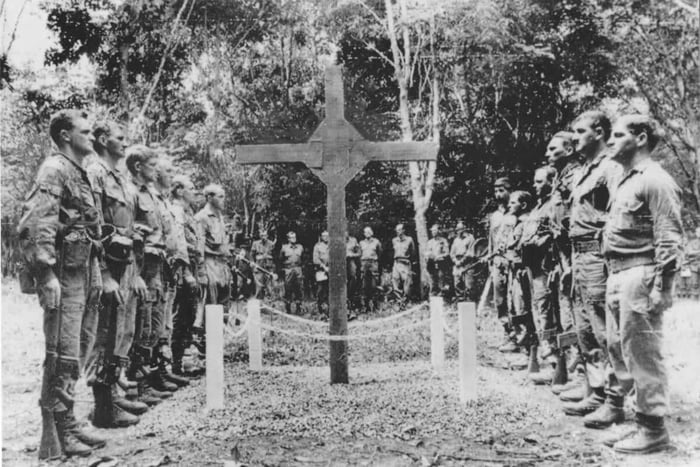
The Battle of Long Tan is one of the most noted battles involving Australian troops during the Vietnam Campaign. The date of this against-all-odds fight, August 18, 1966 is now observed each year to commemorate all who served in the Vietnam War. Read about the Survivors of the Battle of Long Tan here.
The original concrete cross and plaque, first erected in 1969 (feature image) amid the devastated rubber plantation where the battle was fought on 18 August 1966, now sits in Bien Hoa's Dong Nai Museum. In its place at the site sits a replica - one of only two foreign military memorials permitted in Vietnam.
Long Tan was Australia’s most costly single battle of the Vietnam War. Eighteen Australians died and 24 men were wounded. It was also one of the fiercest against-all-odds fights in our military history. The 108 men of Delta Company 6RAR were pitted against a force of more than 2,000 Viet Cong and North Vietnamese regulars. The enemy’s losses are not well documented but estimates suggest at least 600 died in the three hour battle.
Dave Sabben, who was commander of 12 Platoon, Delta Company, 6RAR at Long Tan says that after the battle, the area was noted by those who visited or patrolled through it as a place of reverence – hallowed ground and a sombre place – where each fresh rainstorm exposed more equipment and remains.
6RAR/NZ (ANZAC) Battalion, on its second tour of Vietnam, mounted 'OPERATION LONG TAN' on 18 August 1969. Amid the dangers of war, a nine-foot unpainted concrete cross was helicoptered into the plantation and set at the site where 11 Platoon had dug in for most of the battle.
The cross was intended to honour the Australians who gave their lives in the battle but over time it has come to represent all who served in the war.
The 6RAR Pioneer Platoon Cpl Barry McAvinue constructed the cross, supervised by Sgt Allan McLean. Royal Australian Electrical and Mechanical Engineers at Nui Dat provided the brass plaque and the wording was provided by RSM, WO1 Jim Cruickshank. The plaque read:
“In memory of those members of D Coy and 3 TP 1APC Sqn who gave their lives near this spot during the battle of Long Tan on 18th August 1966. Erected by 6RAR/NZ (ANZAC) Bn 18 August 69.”
Once in place, the men held a service, with 10 soldiers who had been at the battle in 1966 or in D Company at the time, lined on either side of the cross as two pipers played a Lament.
For the remainder of the war in Phuoc Tuy Province, the Cross stood safe in the rubber plantation. Patrols swept the area occasionally but the battlefield remained otherwise untouched. The final patrol by 6RAR in May 1970 went to the Cross and, after checking for mines and booby traps, washed it down, polished up the brass plaque and held a farewell service. The Cross was in good condition but the chain guard rail had been stolen.
It is after the fall of Saigon fell in 1975, when authorities had the original Cross knocked down, that the history of the cross gets hazy. What is accepted is that the cross was retrieved by locals and used as a headstone – for who and by who is not definitively known. The brass plaque was said to be taken and used as a cooking plate.
It is accepted that in the 1980s that the cross and plaque were reunited, most likely by a Vietnamese veteran, and placed in Bien Hoa's Dong Nai Museum where they remain to this day. They are displayed as 'war trophies' and when Australian authorities requested the Cross and plaque be repatriated to Australia they were refused.
In 1989 the Long Dat Peoples' Committee erected a replica cross and plaque at the battle site. A memorial plaque to the Vietnamese soldiers of D445 was also added.
While the rubber plantation was cut down in 1991 to make way for a corn crop the cross and site was left standing and more and more Australian Veterans started making a pilgrimage to the site.
Over the years a number of individuals and groups – Australian and Vietnamese – took it on themselves to maintain the site. The area reverted to a rubber plantation and more veterans made the trek to honour the service of all who served.
In April 2002 the Vietnamese Government handed over custodianship of the cross and site to the Australian Vietnam Veterans Reconstruction Group (AVVRG), which has maintained the site since. In the same year, a sand jar was added for joss sticks to honour the Vietnamese dead. The site now serves as a reminder of the price both sides paid in the battle and the war.

The Long Tan Cross, is a symbol of honour for all
Today services are held on Anzac Day and Vietnam Veterans’ Day with the approval of the Vietnamese authorities, although strict protocols apply, such as not wearing medals or carrying military-related materials.
The site now has a pathway suitable for all ages and the paved grounds are kept to a standard befitting a memorial to those who gave their lives in war.
People wanting to visit the site should always do so through a registered tour provider or risk breaking the protocols that have allowed this splendid memorial to stand as one of only two foreign memorials in the country.
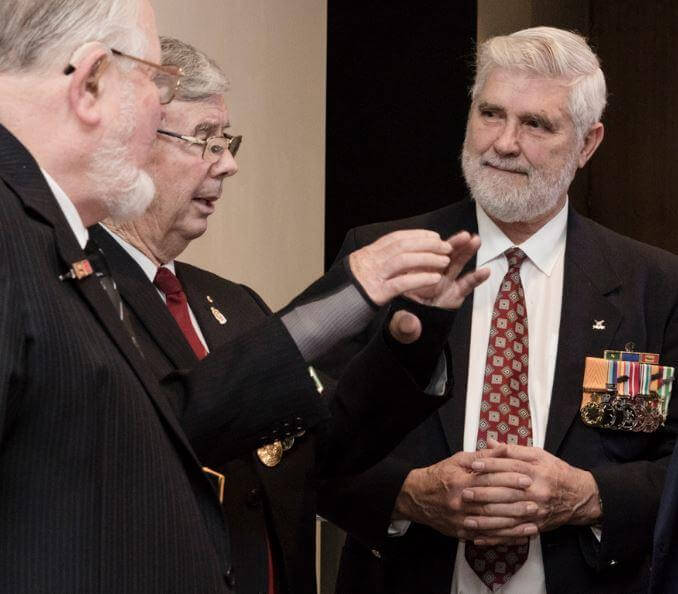
(This article was originally published on the Military Voice on 13 July 2023, based on materials provided by Long Tan veteran Dave Sabben. To read Dave’s detailed history of the Cross and to learn about tours to Vietnam visit www.Sabben.com)
18 August: Vietnam Veterans Day
On 18 August each year, we honour and remember the service of some 60,000 Australian men and women who served in the Vietnam War and their families. Tragically, 523 Australians lost their lives in the war, and over 3,000 were wounded.
Show your support through the Vietnam War Collection






